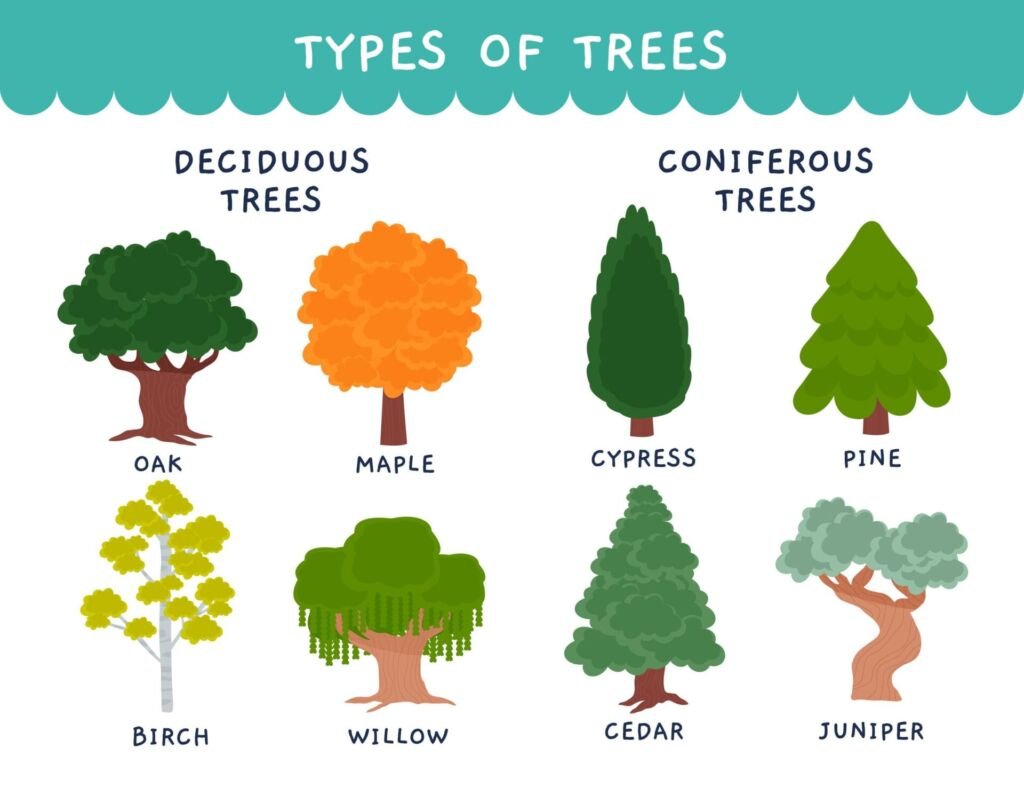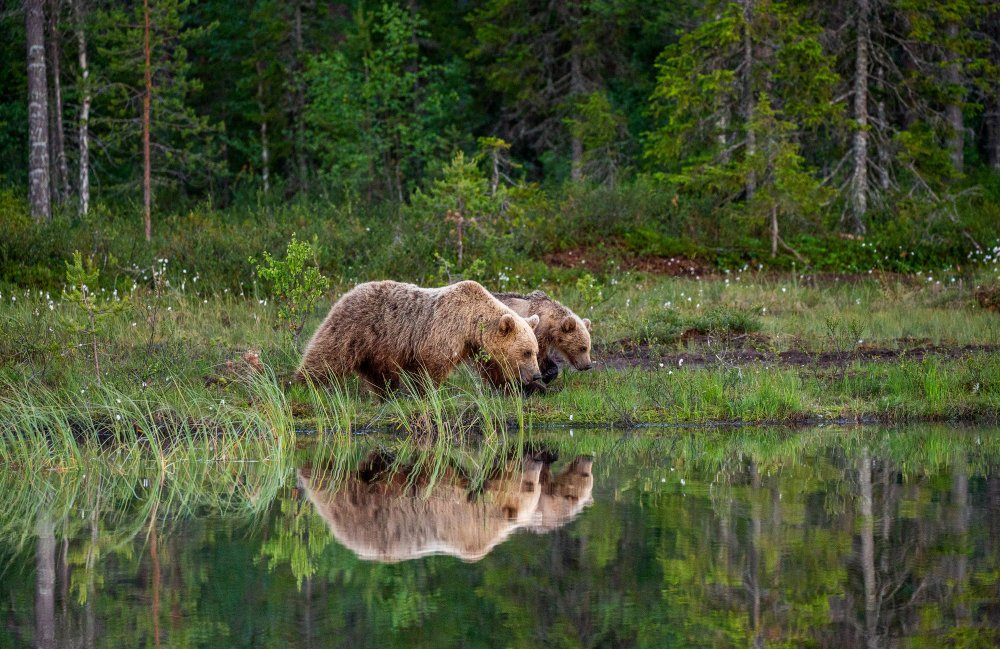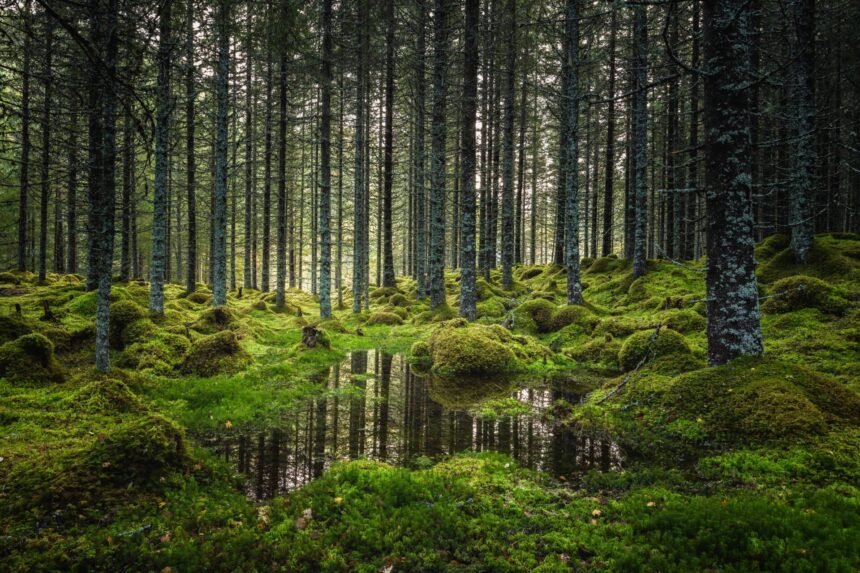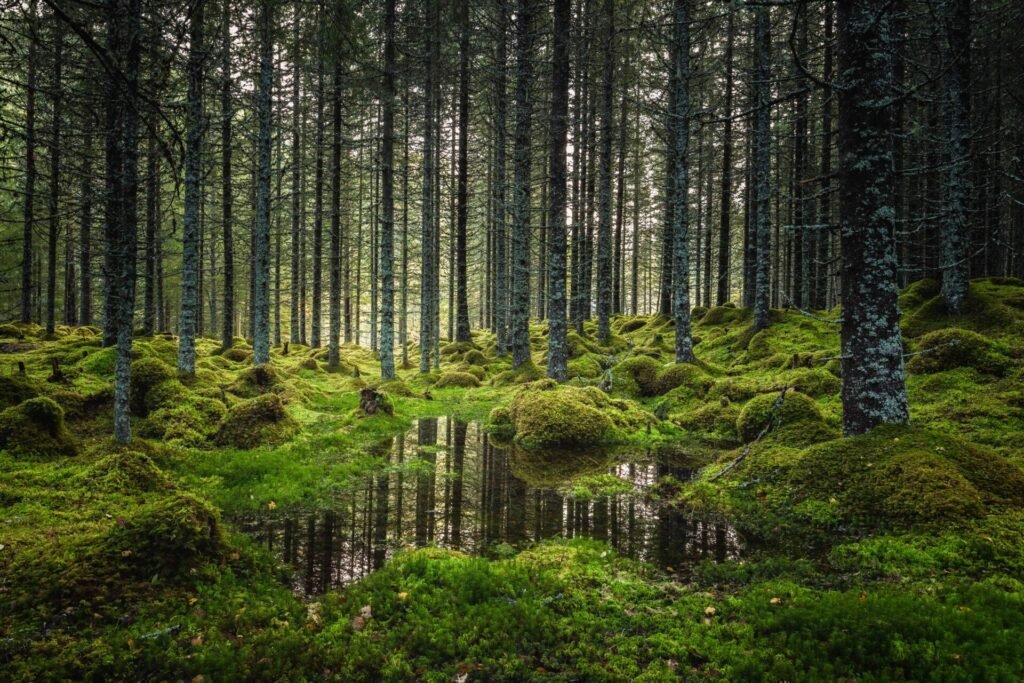Imagine a vast forest that circles the globe, a land of whispering pines and shimmering lakes, where wolves howl, and the aurora borealis paints the night sky. This is the boreal forest, a realm of wonder and resilience.
The boreal forest, a treasure trove of biodiversity, is under threat. Fires rage, temperatures rise, and its delicate balance hangs in peril. It’s time to understand this vital ecosystem and why we must protect it.
⫸ Introduction to the Boreal Forest Ecosystem
The boreal forest ecosystem, also known as the taiga, is a breathtaking biome that encircles the globe’s northern reaches. This vast expanse of forests, wetlands, and lakes plays a crucial role in regulating our planet’s climate and harboring extraordinary biodiversity. Let’s delve into the defining features of this remarkable ecosystem.
What is the boreal forest?
The boreal forest is characterized by its cold, harsh climate and dominance of coniferous trees—think pines, spruces, and firs. These trees have evolved remarkable adaptations to survive long winters and short growing seasons. The landscape also features deciduous trees like birch and aspen and abundant mosses, lichens, and shrubs.
Where is the boreal forest located?
The boreal forest forms a circumpolar belt across the Northern Hemisphere, spanning vast stretches of Canada, Alaska, Russia, Scandinavia, and parts of Asia. It covers approximately 17% of the Earth’s land surface, making it the world’s largest terrestrial biome.
Key characteristics of the boreal forest
- Cold Climate: Long, frigid winters and short, cool summers define the boreal forest.
- Nutrient-Poor Soil: The soil tends to be acidic and low in nutrients due to the slow decomposition of conifer needles.
- Fire-Adapted Ecosystem: Wildfires are a natural part of the boreal forest cycle, playing a role in regeneration.
⫸ Climate and the Boreal Forest: A Delicate Dance
The boreal forest ecosystem thrives within a unique climatic regime. Its harsh winters and short summers dictate every aspect of life within this biome. Let’s delve into how temperature, precipitation, and the interplay between these factors shape the boreal world.
Temperature patterns in the boreal forest
- Extremes define the boreal forest. Long, frigid winters regularly dipping below -20°C (-4°F) are the norm.
- Short yet surprisingly warm summers can see temperatures reach upwards of 20°C (68°F).
- This vast temperature range places unique stresses on plant and animal life within the ecosystem.
Precipitation and its role
- The boreal forest receives relatively low precipitation, generally between 200 and 600 mm annually, of which snowfall accounts for a significant portion.
- Despite low precipitation due to slow evaporation rates in cool temperatures, water availability is rarely an issue.
- Bogs and wetlands are common features resulting from water pooling on poorly drained soils.
How climate shapes boreal forest life
- Plants: Conifers dominate with adaptations like needle-shaped leaves to minimize water loss and dark colors to absorb sunlight.
- Animals: Thick fur, hibernation, and migration strategies are crucial for winter survival.
- Short growing season: Life cycles in the boreal forest are often compressed into the short burst of summer activity.
⫸ Plants of the Boreal Forest
The boreal forest’s harsh conditions demand extraordinary adaptations. Let’s explore the incredible plant life that thrives in this unique biome, from towering conifers to the resilient vegetation carpeting the forest floor.
Evergreen Conifers: The Dominant Species
- Conifers like spruce, fir, and pine reign supreme in the boreal forest.
- Their needle-like leaves and conical shape minimize snow buildup and reduce water loss during the long winters.
- A waxy coating on needles further protects from the cold.
Conifer Adaptations to Boreal Conditions
- Shallow root systems allow conifers to access nutrients in the thin boreal soil.
- Dark needles absorb sunlight for warmth and aid in year-round photosynthesis.

Deciduous Trees in the Boreal Forest
- Aspen, birch, and other deciduous trees dot the landscape, especially in areas of recent disturbance.
- Their ability to shed leaves in winter conserves energy.
Unique Understory Vegetation
- A carpet of mosses, lichens, and shrubs thrives beneath the forest canopy.
- Low-growing plants like blueberries and cranberries provide vital food for wildlife.
- Specialized species, such as the insect-trapping pitcher plant, reveal the remarkable adaptability of life in the boreal forest.
⫸ Animals of the Boreal Forest
The boreal forest teems with a fascinating array of animal life specially adapted to its unique environment. From mighty herbivores and cunning predators to the intricate world of insects, let’s explore the creatures that make this ecosystem thrive.
Mammals of the boreal forest

- Large herbivores: Moose, with their long legs and massive antlers, are built to navigate deep snow and browse on shrubs. Caribou form herds, some migrating vast distances for food like lichens. Deer are also versatile feeders, adapting to the resources available in their forest home.
- Predators: Wolves hunt in packs; their teamwork is essential for taking down large prey. Lynx rely on stealth and ambush, and their spotted coats provide camouflage. Wolverines, though small, are fierce and resourceful, scavenging and hunting with surprising tenacity.
Birds of the Boreal Forest
- Year-round residents: Owls use their keen hearing and silent flight to locate prey under snow cover. Woodpeckers drill into trees for insects. Grouse have feathered feet for walking on snow and can even digest conifer needles.
- Migratory species: In summer, the boreal forest bursts with life as warblers, thrushes, and other songbirds arrive to breed. They feast on the explosion of insects, raising their young before journeying south for the winter.
Insects: A vital part of the ecosystem
Though less visible, insects are a cornerstone of the boreal forest. They pollinate plants, decompose fallen trees, and provide a crucial food source for countless birds and other creatures.
⫸ Ecological Importance of the Boreal Forest
The boreal forest isn’t just a beautiful landscape; it’s a powerhouse of ecological services that benefit the entire planet. Let’s delve into a few of the vital roles this ecosystem plays:
Carbon Storage and Climate Change
The boreal forest is a natural climate warrior! Its trees, soils, and peatlands store a massive amount of carbon, acting as a buffer against excess carbon dioxide in the atmosphere. This stored carbon helps mitigate the impacts of climate change, keeping our planet cooler.
Water Filtration and Regulation
The boreal forest’s vast network of lakes, rivers, and wetlands acts like a giant natural filter. These systems purify water, removing pollutants and making it safe for wildlife and human communities downstream. Additionally, the forest helps regulate water flow, preventing floods and droughts.
Biodiversity and Habitat Provision
The boreal forest is a haven for countless species. This ecosystem supports a rich web of life, from iconic mammals like moose and lynx to billions of migratory birds to the smallest insects. The boreal provides shelter, breeding grounds, and food sources essential for the survival of this biodiversity.
⫸ Threats to the Boreal Forest
While seemingly vast and resilient, the boreal forest faces many threats that jeopardize its health and the crucial services it provides. Let’s examine some of the most pressing dangers:
Climate change and its impacts
Rising temperatures are fundamentally altering the boreal forest. Shorter winters and hotter summers stress trees. Droughts become more frequent, while insect outbreaks and disease spread. These changes disrupt the delicate balance of the ecosystem.
Logging and deforestation
Large-scale logging operations fragment the boreal forest. Clear-cutting removes vital habitat and reduces the forest’s ability to store carbon. Road building for logging further disrupts wildlife and can increase erosion and pollution.
Wildfires
Wildfires are a natural part of the boreal forest, but climate change makes them more frequent and intense. These fires release stored carbon into the atmosphere and can destroy vast areas of habitat, taking decades for the forest to recover, if at all.
⫸ Conservation of the Boreal Forest
Protecting the boreal forest’s health and resilience is essential for our planet’s well-being. To safeguard this vital ecosystem, a multifaceted approach is crucial. Here are some key strategies:
Sustainable forestry practices
Responsibly managed forests can coexist with ecological goals. Practices like selective harvesting, protecting sensitive areas, and mimicking natural disturbances help maintain forest health while providing resources.
Protecting intact forest areas
Large, undisturbed swaths of boreal forest are crucial for biodiversity and carbon storage. Establishing protected areas, particularly those led by Indigenous communities safeguards these vital core regions.
International cooperation for conservation
The boreal forest spans multiple nations, so cross-border collaboration is necessary. Sharing knowledge and resources and aligning conservation goals is essential for the long-term success of protection efforts.
⫸ Conclusion
The boreal forest is a natural wonder, a testament to the resilience and interconnectedness of life. Yet, this precious ecosystem faces mounting pressures. It’s time to understand its importance and why we must protect it.
The boreal forest: A vital and vulnerable ecosystem
The boreal forest plays a critical role in our planet’s health. We depend on its vast carbon stores, its clean water, and the rich biodiversity it supports. However, climate change, deforestation, and unsustainable practices threaten its delicate balance.
Call to action
- Get informed: Find reputable boreal forest conservation organizations. Explore their websites and understand the issues this ecosystem faces (examples: Nature Conservancy, Boreal Conservation, etc.).
- Support sustainable choices: Choose products with certifications like the Forest Stewardship Council (FSC) to ensure responsible forestry.
- Spread the word: Share your knowledge of the boreal forest’s importance with others and inspire action.


